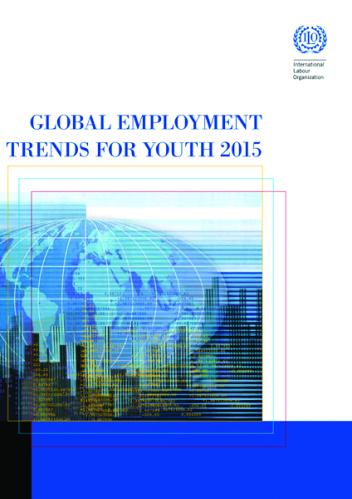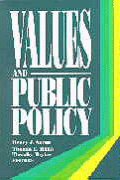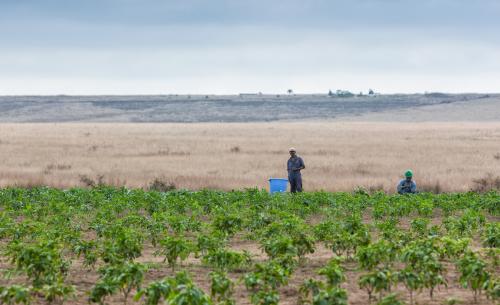While older adults suffer disproportionately from COVID-19’s health impacts, adolescents and young adults are likely to bear the brunt of the global economic and social crises unleashed by the coronavirus. Addressing these crises cannot wait until after the virus has receded. And young people themselves should be at the center of pandemic recovery plans. They are not just victims of these interlocking crises. They can be a cost-effective response to lead and contribute to mitigating the long-term health, economic, and social costs that their generation may experience most profoundly.
To date, the coronavirus crisis has been treated primarily as a public health emergency. It is now time for a broader global strategy. Public health measures to slow the spread of the disease, however understandable, shut down businesses and industries, affecting 2.7 billion workers and 81 percent of the world’s workforce. Reduced production and consumer spending are in turn driving a collapse in commodity prices, undercutting economies around the world. Meanwhile, external financing to emerging markets has vanished as remittances, private debt and equity, tourism, and domestic tax revenue evaporate.
When job creation in the private sector stalls, the axe falls disproportionately on young workers who are already three times more likely than adults over age 25 to be unemployed, largely due to structural barriers impeding young people from entering the labor market. Marginalized youth, especially young women and minorities, are particularly vulnerable.
The prospect of social and political unrest appears to be spreading along with the virus. Already, protests are cropping up in Lebanon, Iraq, India, Peru, and the United States, in many cases building on prior unrest. Violence is a risk, too. To date, more Kenyans have died in police crackdowns against curfew violators than from the virus itself. Grievances could intensify further as the economic consequences of the virus play out.
This economic and social conflagration hits at a time when lower and middle-income countries are experiencing rapid population growth, the fruit of 40 years of improvements in health and living standards. There are now around 1.2 billion young people globally, 267 million of whom were not in education, employment, or training before the pandemic. That number continues to grow. In Africa alone, over 170 million people will join the workforce over the next five years. This youth boom, combined with the sudden disappearance of education and job opportunities, threatens to replace progress with poverty and grievance. It is a combustible recipe for civil unrest, mass migration, and human misery.
To head off the worst repercussions of this youth unemployment challenge in the wake of the coronavirus, we must act now, focusing on three critical issues.
1. Educate
Over 1 billion children and youth—more than 9 out of 10 students—are out of school, and children sent home in poorer nations are more likely to never return. This catastrophic loss of future productivity, if left unaddressed, will rob an entire generation and hobble future recovery efforts. As we pour resources into new vaccines to fight the pandemic, we must also ensure young people have access to education and skills training. Investments we make now in digital and distance learning, including increased connectivity, will pay dividends as countries recover. As industries such as tourism, retail, and food service, come back to life, youth-centered recovery plans will enable these industries to rebuild with an educated, skilled workforce with strong digital skills and enhanced resilience to future shocks.
2. Engage
Large-scale publicly funded youth employment programs of national service or public works, along the lines of the depression-era U.S. Civilian Conservation Corps, are needed not only to provide employment but also to reinforce civic values of working together to overcome common challenges. Youth employment programs should incorporate “service learning” so that participants combine job experience with learning qualities like empathy, critical thinking, and lifeskills that they can take with them to future jobs. Programs should invest in developing the types of citizens and leaders countries will need for the future.
Failure to create pathways for young adults to build lives for themselves, their families, and their communities will prolong the economic and social malaise and open the door to conspiracies and ideologies with false promises of a brighter future. We have already seen violent extremists taking advantage of vulnerable youth by providing basic services where the state is absent and recruiting youth who are online more during the stay at home period. Governments must make a choice: engage youth in positive activities or cede the initiative to gangs, extremists, and other malign actors who will. Thus, including youth in pandemic response activities, such as tracers and educators, is not only essential economically, it is a sensible and cost-effective way to prevent conflict.
3. Employ
While employment programs are an appropriate emergency response to engage youth, build skills, and stabilize communities, they do not replace the need for a dynamic private sector that fosters innovation and creates jobs that sustain stability and prosperity.
Recovery strategies must therefore enable young entrepreneurs to easily access capital to start or build enterprises that can jump-start economic recovery. This will require hybrid public-private financing such as enterprise support and venture capital funds, loan guarantees, business accelerators, and project development facilities. We also need pathways for youth to move from publicly funded emergency employment to private sector jobs that both employ and supply essential goods and services.
There are already inspiring examples of youth taking the initiative to better their communities: producing masks, volunteering to deliver food, helping neighbors, developing new treatments for disease. Prioritizing education, civic engagement, and employment will draw new stakeholders into the post pandemic recovery effort. It will invest in the leaders of the future. Failure to engage youth will not only slow recovery but also undermine stability and prosperity of societies worldwide.











Commentary
Youth or consequences: Put youth at the center of COVID-19 recovery
June 8, 2020